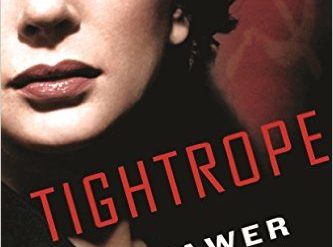
The singularity is history. Afterwards, centuries ago, the superhuman intelligence gained by machines enabled humans to “ascend,” leaving their frail bodies of flesh and bone and uploading into what today we call the cloud. They’re “vastly more intelligent, compassionate, and enlightened than any human could be.” And now the billions of ascenders can download themselves into a multitude of different bodyforms and change bodies at will. They’re immortal.
The greatest prize of all, denied to all but a handful
But millions have never ascended. These legacy humans eke out an impoverished existence in the half-dozen crumbling cities where the ascenders permit them to live. They’re “a living genetic museum.” And Susan Kaye Quinn’s moving young adult novel tells the tale of one such legacy human as he struggles to gain permission to ascend. That’s a feat that’s now virtually impossible to attain. Not long after the singularity, the ascenders denied entry to all humans. Now, once a year just four teenage legacy humans gain the opportunity. They’re the lucky winners in the “Olympics” held to identify the one legacy human the ascenders consider creative enough to be worthy in each of four categories. The four are the visual arts, drama, story, and music. And seventeen-year-old Elijah (Eli) Brighton is a supremely talented painter with a shot at winning. It is, after all, the greatest prize of all.
The Legacy Human (Singularity #1 of 4) by Susan Kaye Quinn (2015) 500 pages ★★★★☆

An eye-opening experience
There’s just one problem. Eli is able to create great art only when he descends into a fugue state at unpredictable times. He loses conscious control and has no memory of how he creates such masterpieces. But Eli is determined to find a way to manage the process. It’s not just that he himself yearns for immortality. His mother is terminally ill, and her only chance for survival is to ascend. Terrified that he will fail, Eli heads off to the Olympics. And there he discovers just how sheltered he has been from the real world around him.
Quinn’s story unfolds in the course of the Olympics. There, Eli meets and falls in love with a beautiful dancer who is herself primed to win the gold. And she and her friends introduce him to a shockingly new perspective on the world after the singularity and on what it means to be human.
About the author

As she reveals on her website, “Susan Kaye Quinn is a rocket scientist turned speculative fiction author who now uses her PhD to invent cool stuff in books. . . She writes full-time from the Chicago suburbs with her three boys, two cats, and one husband.” According to Goodreads, she has written 63 books to date.
For more reading
I’ve also reviewed the second book in this series, The Duality Bridge (Singularity #2 of 4) by Susan Kaye Quinn (A sci-fi series goes awry with a muddled religious message).
You might enjoy 30 good books about artificial intelligence.
For more good reading, check out:
- The ultimate guide to the all-time best science fiction novels;
- Great sci-fi novels reviewed: my top 10 (plus 100 runners-up);
- Seven new science fiction authors worth reading; and
- The top 10 dystopian novels reviewed here (plus dozens of others).
And you can always find my most popular reviews, and the most recent ones, plus a guide to this whole site, on the Home Page.

























